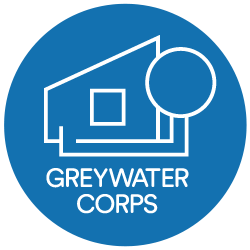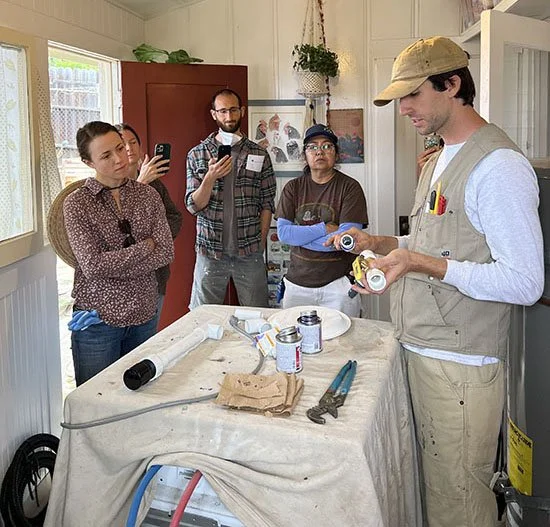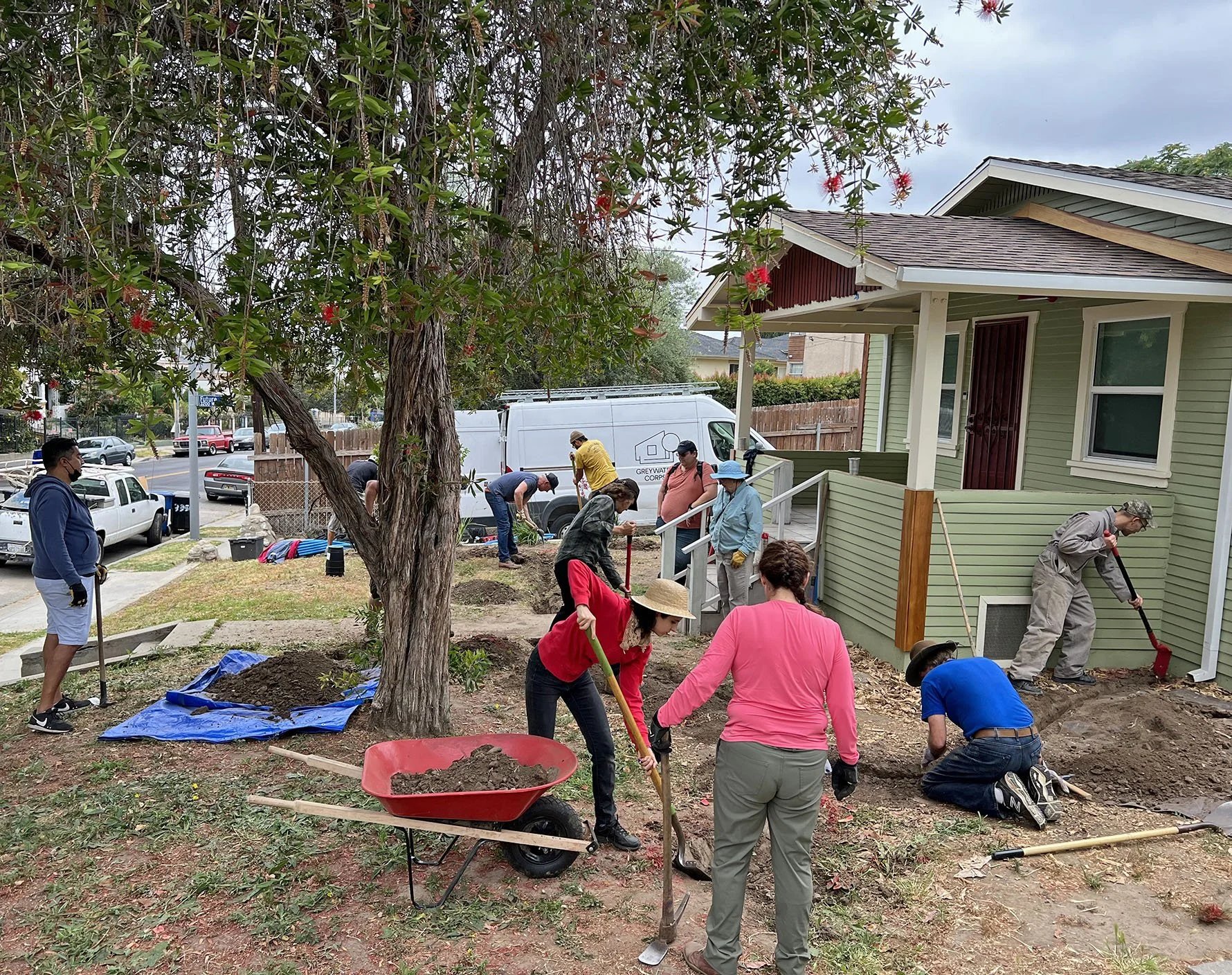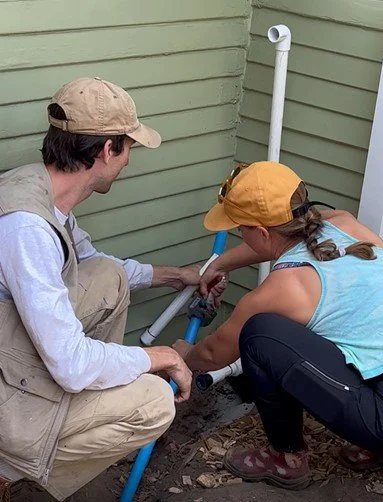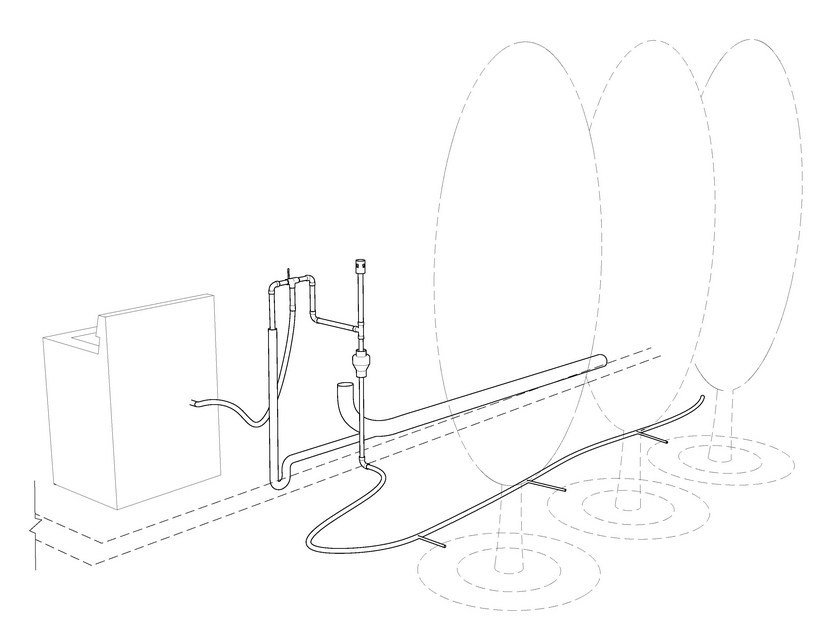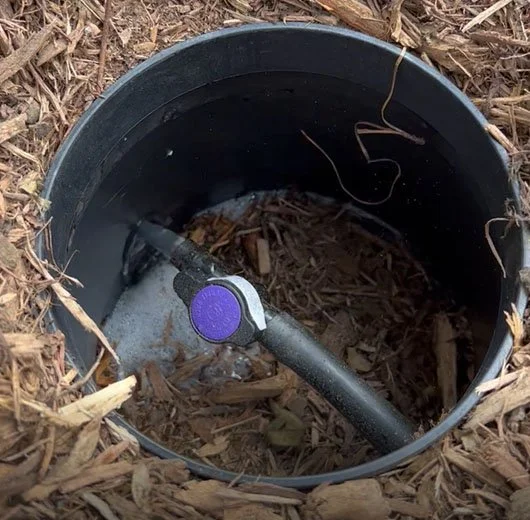Laundry-to-Landscape Workshop
On the first Saturday of June, a group including contractors, homesteaders, DIYers and department heads at UCLA came together in Glassel Park with water conservation on their minds. By the end of the day, they had built a greywater irrigation system. Here’s how it went down.
Leigh delivers a brief presentation with breakfast.
The morning kicked off with a round of introductions followed by a presentation from Leigh Jerrard covering the water situation in California and some greywater irrigation basics. Twenty-five of us had gathered to build a laundry-to-landscape system, a DIY favorite that does not require permits and delivers significant water to thirsty plants.
After the mandatory safety meeting and a quick breakdown of the daunting task at hand, we split into two groups: one inside and one outside the house. A third party would be dispatched underneath, more on that later.
Justin demonstrates how to plumb the 3-way diverter valve.
Inside the laundry room, people listened and filmed intently as Greywater Corps installer Justin Lucas explained how we would be plumbing the pipes to get greywater from the washing machine to the front yard. Volunteers tried their hand at working with PVC while Justin demonstrated how to make perforations in the wall and floor to run the pipe into the crawlspace below. After workshopping how to configure the pipes, Justin guided attendees through the assembly and mounting of the plumbing.
Mounting the 3-way sewer/garden valve.
Meanwhile out front, a full on team effort was underway to prepare the trenches for our irrigation lines and basins. The beauty of laundry-to-landscape systems is their simplicity. Untreated greywater flows directly to the landscape, with no filters or other equipment to maintain. To accommodate for particles in greywater and avoid clogs we run 1 inch tubing for our irrigation mainline, with ½ inch stub outs at each irrigation point ending in what we call emitters. The emitters release the greywater inside valve boxes into trenches about a foot deep filled with wood-chip mulch. We call these mulch basins.
This group made quick work of the trenching portion of the day.
After the digging was done we started laying out and cutting the tubing. With everyone’s help the irrigation system was coming together before our eyes. Soon enough it was time to connect to the plumbing. A small but dedicated group had gone under the house to build the plumbing from the laundry room to the front. Most of this work was completed by installer Clay Mosman, the real MVP of the day, and culminated in a 1” PVC outlet in front of the house that we connected to our irrigation network.
Teresa and Justin connect the irrigation at the outlet from under the house. The vertical pipe is an emergency overflow.
All that was left to do was test and tune the system. Our host, Compostable LA collaborator and @future_foods_urban_farm manager Teresa English, ran a load of laundry, and we waited.
Basic L2L diagram.
The first gurgling noises drew everyone to the basins, where a trickle of sudsy water was flowing unevenly to some but not others. “This one doesn’t have any water”, someone called out. After all of that work it was a bit of a let down. Of course we still needed to tune the system, adjusting the valves at the end of each emitter to compensate for irregularities in flow – some valves wide open to allow more water, others partially shut to keep too much from flowing in.
This helped even the flow but the results were still disappointing. All that for a measly trickle? But then the gurgling came back, louder this time. The line filled up and greywater shot out of all of the emitters, humming along for a few minutes as the washing machine finished draining. All those gallons, diverted from the sewer to feed shade and fruit trees out front.
Greywater emitter flowing into mulch basin.
We all grinned at our creation, satisfied with a day well spent. Goodbyes were said and cases of beer materialized as everyone headed off to cool down in one way or another, scheming of greywater projects ahead.
We’ll be hosting another workshop at the end of the summer, date TBD. Subscribe to our mailing list to be the first to find out. See you there!
As-built diagram of the system with pipe run under the house and 4 emitter basins in the front yard.
